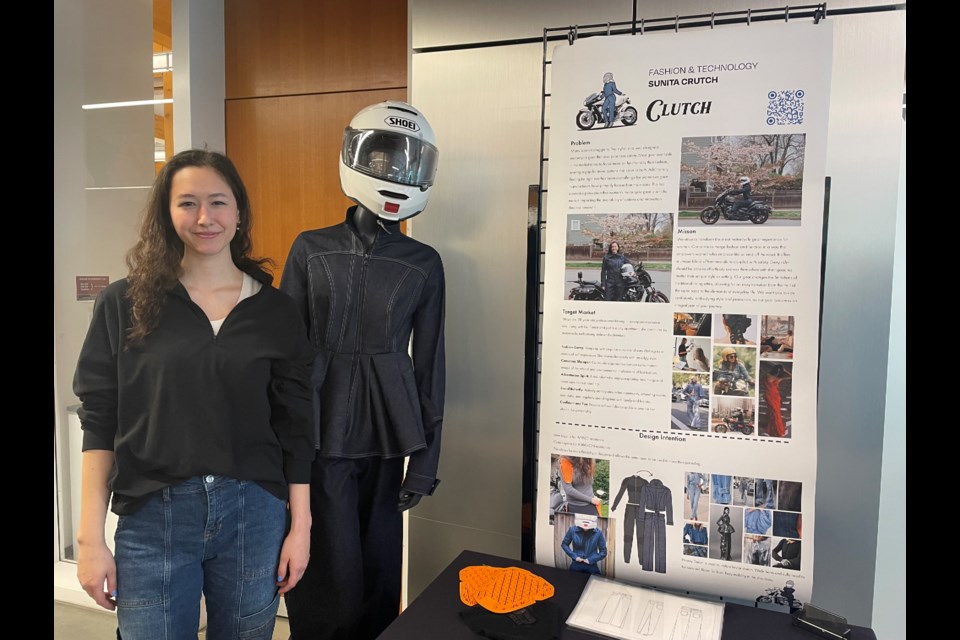KPU's Wilson School of Design in Richmond was bustling with people attending the students' graduation project showcase on Thursday.
The school's annual graduation show titled Creatures of Curiosity was held on April 25 and displayed more than 100 projects and portfolios by students from seven different KPU design departments.
These departments are fashion and technology, fashion marketing, foundations in design, graphic design for marketing, interior design, product design and technical apparel design programs.
Many high school students, some travelling from as far as Vancouver Island, came to visit the free showcase, according to Gabrielle Durning, coordinator of communications and events at KPU's Wilson School of Design.
"The common denominator between all programs is that they're focused on teaching students who will then become designers or marketers out in the world and solve problems," said Durning.
"These students are not creating stuff for the sake of stuff but it's really finding what are the needs of the user market."
Sunita Crutch, a fourth-year student in KPU's fashion design and technology program, was among the many graduating students showcasing her work.
Being a motorcycle rider herself, Crutch's project focused on designing stylish motorcycle apparel for women while prioritizing safety.
"A lot of the bigger brands don't make gear with a lot of different options for women. They are often either neon pink or men's gear sized down to fit women," said Crutch.
Her design included a full denim outfit with 3D-printed armour padding on the inside of the fabric.
"I really wanted to make sure with my design, people can wear this on and off the motorcycle with the sustainability aspect of allowing to wear it for more than one occasion," she explained.
Meanwhile, KPU interior design student Larry Bian focused his project on designing a learning environment for an elementary school for the deaf.
"Inclusive learning is something we need to push towards and when I saw the school for the deaf as an option for my project I knew this needed to be implemented into the world," said Bian.
Not every child at a school for the deaf is completely hard of hearing; there are varying levels of hearing, explained Bian.
He added flexible space and minimized noise, which were both important parts of his design to keep students focused and learning in a safe environment.
"Just having that general sense of community is important, because this is a school catered towards these students and we want them to feel like this is a second home and really make them grow in deaf culture."
-with files from Vikki Hui
Got an opinion on this story or any others in Richmond? Send us a letter or email your thoughts or story tips to [email protected]. To stay updated on Richmond news, sign up for our daily headline newsletter.


